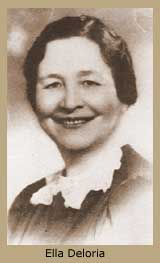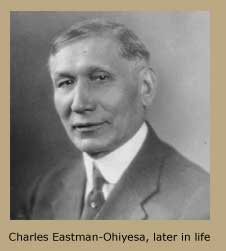 |

Basic Call to Consciousness

Intention

Invented White
History & Imagery

In the Beginning

First Nations Governance

Trail of Tears

Tragedy of
Little Bighorn

Massacre at
Wounded Knee

Duwamish/Suquamish
Displacement

Cultural Genocide

Native Values

Impact of European Immigrants

The Take-over

Called ‘Indian’ or....

Cultural Genocide - Boarding schools

Native Values &
Way of Life

Morality

Depression &
Substance abuse

Cultural Distinctions

Spiritual Sensibilities

Language

Living Two Lives

Leaders or Rulers

Written or Oral

Painful History

Iroquois Conservation

Chief Seattle’s
Farewell Speech

Spirit Road

|
 |

Native Values & Way of Life
The Lakota elder continues with Nerburn: “I tell you, Nerburn, being an Indian isn’t easy. For a lot of years America just wanted to destroy us. Now, all of a sudden, we’re the only group people are trying to get into. I think it’s because these white people know we had something that was real, that we lived the way the Creator meant people to live on this land. They want that. They know that the white people are messing up with their ways.

A striking contrast of Lakota priorities in comparison with those of Dominant Society: In Lakota culture love for the whole nation of relatives superseded individual relationships. Behaviors of promiscuity, excessive longing for one person, adultery and jealousy were regarded as regressive in adults, who, by nature and training are expected to be thoroughly devoted to their children’s future, like the buffalo, eagle, and other species that the People revered and emulated. Individual gratification was subordinate to the needs of the group.

“Stability, control and moderation in all physical appetites [including sex] were expected of men of strength” - moderation of desires was a social necessity for a nomadic people who could not readily transport large numbers of small children in often harsh conditions. The group held fathers in contempt if children were born more frequently.


Reference: Deer Women and Elk Men: Lakota Narratives of Ella Deloria (1889-1971), educator, anthropologist, ethnographer, linguist and novelist of Yankton Lakota heritage.

 “We Indians know about silence. We aren’t afraid of it. In fact, to us it is more powerful than words. Our elders were schooled in the ways of silence, and they passed that along to us. Watch, listen, and then act, they told us. This is the way to live. Watch the animals to see how they care for their young. Watch the elders to see how they behave. Watch the white man to see what he wants. Always watch first, with a still heart and mind, then you will learn. When you have watched enough, then you can act.” “We Indians know about silence. We aren’t afraid of it. In fact, to us it is more powerful than words. Our elders were schooled in the ways of silence, and they passed that along to us. Watch, listen, and then act, they told us. This is the way to live. Watch the animals to see how they care for their young. Watch the elders to see how they behave. Watch the white man to see what he wants. Always watch first, with a still heart and mind, then you will learn. When you have watched enough, then you can act.”

 Charles Eastman--Ohiyesa--states in The Soul of an Indian: “... silence-the sign of perfect equilibrium. Silence is the absolute balance of body, mind, and spirit. The man who preserves his self hood ever calm and unshaken by the storms of existence...is the ideal attitude and conduct of life. What are the fruits of silence? They are self-control, true courage or endurance, patience, dignity, and reverence. Silence is the corner-stone of character.”
Charles Eastman--Ohiyesa--states in The Soul of an Indian: “... silence-the sign of perfect equilibrium. Silence is the absolute balance of body, mind, and spirit. The man who preserves his self hood ever calm and unshaken by the storms of existence...is the ideal attitude and conduct of life. What are the fruits of silence? They are self-control, true courage or endurance, patience, dignity, and reverence. Silence is the corner-stone of character.”

Ignatia Broker, Ojibway author of Night Flying Woman, confirms: “Oona’s first months were like those of all Ojibway children. The Ojibway know that a learning process begins at birth and that a baby’s first learning experience is watching. So, as soon as possible, Oona was laced into a cradle board and placed where she could watch her family at work and at play.”

The Lakota elder continues: “With the white people it is just the opposite. You learn by talking. You reward the kids who talk the most in school. At your parties everyone is talking all at once. In your work you are having meetings where everyone interrupts everyone else. You say it is working out a problem. To us it just sounds like a bunch of people saying whatever comes into their heads without listening to others.

 “I remember one teacher telling me I needed to learn how to think. She really didn’t care about my thinking. She just wanted me to talk. She thought talking meant thinking. I thought it was disrespectful to talk when I didn’t have anything to say. They said I was a bad student and that I was dumb. And, the teachers say we don’t pay attention because we don’t look at the teacher’s eyes all the time. We don’t look at the teacher’s eyes becausew e are just being respectful in the ways we have been taught-because, for us, it is respect to keep your eyes down when someone more important is talking.” “I remember one teacher telling me I needed to learn how to think. She really didn’t care about my thinking. She just wanted me to talk. She thought talking meant thinking. I thought it was disrespectful to talk when I didn’t have anything to say. They said I was a bad student and that I was dumb. And, the teachers say we don’t pay attention because we don’t look at the teacher’s eyes all the time. We don’t look at the teacher’s eyes becausew e are just being respectful in the ways we have been taught-because, for us, it is respect to keep your eyes down when someone more important is talking.”

Ignatia Broker, Ojibway author confirms: “Oona was only five years old but she was already trained in many of the ways of a good Ojibway. She knew almost all that she could not do….She went to her grandparents and stood before them with eyes cast down, knowing she could not speak the many questions she wished to ask, for they who are wise must speak first. Always, the first words spoken should be from the older people.”

Lakota elder continues regarding the sensibilities of traditional First People: “You don’t convince anyone by arguing. People make their decisions in their heart. Talk doesn’t touch my heart. People should think of their words like seeds. They should plant them, then let them grow in silence. Our old people taught us that the earth is always speaking to us, but that we have to be silent to hear her. I can understand all the trees. The wind. All the animals. The insects. I can tell what a color of the sky means. Everything in the natural world speaks to me.

 Lakota elder continues: “I watch TV and every ad I see tells me something is new. That means I should get it because what I have is old. There’s no reason to get something just because it”s new. Your way teaches people to want, want, want. What you have is no good. What you don’t have is new and better....White people have an endless hunger. They want to consume everything and make it part of them.” Consider consumerism. Things and Food. Credit card debt & obesity in this country has become epidemic.
Lakota elder continues: “I watch TV and every ad I see tells me something is new. That means I should get it because what I have is old. There’s no reason to get something just because it”s new. Your way teaches people to want, want, want. What you have is no good. What you don’t have is new and better....White people have an endless hunger. They want to consume everything and make it part of them.” Consider consumerism. Things and Food. Credit card debt & obesity in this country has become epidemic.

Eastman’s words echo many Native writers throughout decades: “The native American has been generally despised by his white conquerors for his poverty and simplicity. They forget, perhaps, that Native religion forbade the accumulation of wealth and the enjoyment of luxury.

Eastman continues: ...“the love of possessions has appeared as a snare, and the burdens of a complex society a source of needless peril and temptation. Thus the Native American kept his spirit free from the clog of pride or envy...”

In Profiles in Wisdom, Grandfather William Commanda concurs: “Dominant society has forgotten their Creator. It’s the money that rules today, even though God in their book tells them you cannot serve two masters. Either you serve God or you serve the money. So who are they serving?”

Regarding possessions Eastman continues: “It was our belief that the love of possessions is a weakness to overcome. Therefore, the child must learn, early, the beauty of generosity. He is taught to give away what he prizes most, and that he may taste the happiness of giving. If a child is inclined to be grasping, or to cling to any of his little possessions, legends are told to him, teaching of contempt and disgrace that fall upon the ungenerous person. Also, public giving, known as give-aways, is an important part of ceremony.” Families give-away much of their treasured possessions in honoring weddings, funerals--yet, another example of Partnership model of society.

Lame Deer confirms: ”We don’t believe in a family getting wealthy through inheritance. Better to give a way a dead person’s cherished belongings--that way he or she will be remembered.”

Regarding giving, Eastman speaks of his own experience in so-called becoming civilized: “As a child, I understood how to give. I have forgotten that grace since I became civilized. I lived the natural life, whereas I now live the artificial life. Any pretty pebble was valuable to me, then; every growing tree was an object of reverence. Now I worship with the white man before a painted landscape whose value is estimated in dollars!”
Click on the rug to return to the top of the page.

 Home Home
 Quiz Quiz
 About Author About Author

|
![]() ©2015 Lilthea Designs
©2015 Lilthea Designs